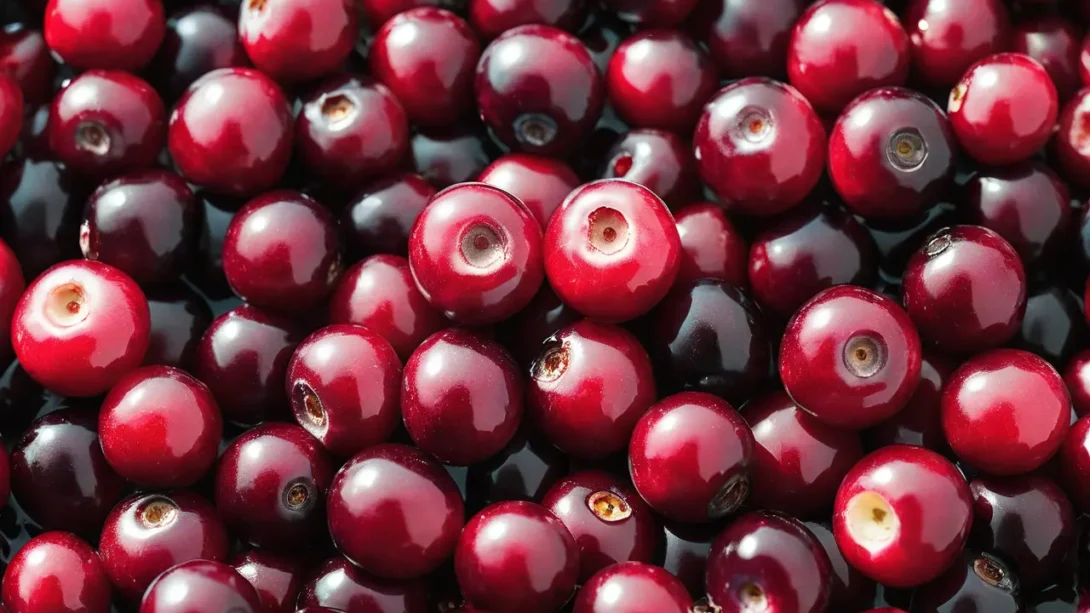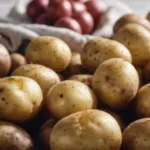Cranberries, with their vibrant red hue and tangy taste, are a quintessential fruit of the fall season. Whether enjoyed in sauces, juices, or baked goods, cranberries add a burst of flavor to dishes and beverages. Understanding the taste profile of cranberries is essential for appreciating their culinary versatility and nutritional value. In this article, we delve into the intricate flavors of cranberries, exploring their sweetness, tartness, and unique astringency.
Cranberries
Before we embark on a journey to explore the taste of cranberries, let’s first acquaint ourselves with these remarkable fruits. Cranberries belong to the genus Vaccinium and are native to North America, where they thrive in acidic bogs and marshes. Two main varieties of cranberries are commonly cultivated: the American cranberry (Vaccinium macrocarpon) and the European cranberry (Vaccinium oxycoccos). These berries are known for their round shape, glossy skin, and distinctive tart flavor.
The Taste Profile of Cranberries
Cranberries offer a complex flavor profile characterized by a harmonious balance of sweetness, tartness, and astringency:
- Sweetness: Despite their tart reputation, cranberries contain natural sugars that contribute to their overall taste. However, compared to other fruits, cranberries are relatively low in sugar content, lending them a refreshing and tangy sweetness.
- Tartness: One of the defining characteristics of cranberries is their tart flavor, which is attributed to the presence of organic acids, particularly citric acid. This tartness provides a refreshing acidity that balances the sweetness of the fruit, creating a pleasing contrast of flavors.
- Astringency: In addition to their tartness, cranberries exhibit a unique astringency, characterized by a puckering sensation in the mouth. This astringency is caused by the presence of tannins, natural compounds found in the skin and seeds of the fruit. While some may find this sensation intense, it adds depth and complexity to the overall taste experience of cranberries.
Factors Influencing Cranberry Flavor
Several factors contribute to the nuanced taste of cranberries, shaping their flavor profile and culinary versatility:
- Growing Conditions: The environment in which cranberries are grown plays a significant role in determining their flavor. Cranberries thrive in acidic, sandy soil with ample moisture, such as the bogs and marshes of North America. The unique combination of soil composition, climate, and sunlight exposure influences the development of sugars, acids, and tannins in the fruit, ultimately impacting its taste.
- Harvesting Time and Methods: The timing of cranberry harvest is crucial for optimizing flavor development. Cranberries are typically harvested in the fall, when they reach peak ripeness and flavor. Wet harvesting, which involves flooding the cranberry beds and using specialized equipment to collect the floating berries, is a common method used to harvest cranberries. Alternatively, dry harvesting involves picking the berries directly from the vines, resulting in slightly different flavor profiles.
- Processing and Culinary Preparation: The way cranberries are processed and prepared also influences their flavor. Cooking cranberries with sugar or other sweeteners can help balance their tartness and astringency, creating delicious sauces, jams, and desserts. Juicing cranberries extracts their tart juice, which can be consumed as is or mixed with other fruits for a refreshing beverage. Drying cranberries preserves their tart-sweet flavor and chewy texture, making them a popular snack or ingredient in baked goods and trail mixes.
Culinary Applications of Cranberries
Cranberries are prized for their versatility in culinary applications, offering a burst of flavor and vibrant color to a wide range of dishes and beverages:
- Fresh Consumption: Fresh cranberries are commonly used in salads, relishes, and salsas, where their tartness adds a refreshing contrast to savory ingredients. Raw cranberries can also be eaten on their own as a tart and tangy snack.
- Processed Products: Cranberries are transformed into various processed products, including cranberry sauce, jellies, and preserves. These sweetened products are popular accompaniments to holiday meals and are also used as toppings for desserts and spreads for sandwiches.
- Beverages: Cranberries are widely used in beverages, both alcoholic and non-alcoholic. Cranberry juice is a popular choice for its tart flavor and potential health benefits, while cranberry cocktails offer a refreshing and festive option for celebrations. Additionally, cranberries can be infused into teas, smoothies, and flavored waters for a burst of flavor and color.
Health Benefits and Nutritional Value of Cranberries
In addition to their delicious taste and culinary versatility, cranberries offer a host of health benefits and are packed with essential nutrients:
- Antioxidant Content and Disease Prevention: Cranberries are rich in antioxidants, including flavonoids, phenolic acids, and vitamin C, which help protect the body against oxidative stress and inflammation. These antioxidants have been linked to a reduced risk of chronic diseases such as heart disease, cancer, and neurodegenerative disorders.
- Role in Urinary Tract Health: Cranberries are well-known for their potential to prevent urinary tract infections (UTIs) due to their ability to inhibit the adhesion of bacteria, such as E. coli, to the urinary tract lining. Consuming cranberry products, such as juice or supplements, may help reduce the frequency and severity of UTIs, particularly in individuals prone to recurrent infections.
- Potential Benefits for Heart Health and Immune Function: The antioxidants and phytonutrients found in cranberries may also benefit heart health by reducing inflammation, improving cholesterol levels, and supporting blood vessel function. Additionally, the vitamin C content of cranberries supports immune function and helps the body defend against infections and illnesses.
Incorporating cranberries into a balanced diet can provide a wide range of nutritional benefits, contributing to overall health and well-being. Whether enjoyed as a snack, ingredient, or beverage, cranberries offer a delicious and nutritious addition to any meal.
Conclusion
In conclusion, the taste of cranberries is a delightful blend of sweetness, tartness, and astringency, making them a unique and versatile fruit with a wide range of culinary applications. Understanding the factors that influence cranberry flavor, such as growing conditions, harvesting methods, and culinary preparation, allows us to fully appreciate their rich taste and culinary potential.
Furthermore, cranberries offer numerous health benefits, thanks to their antioxidant content, potential for urinary tract health, and support for heart health and immune function. By incorporating cranberries into our diets on a regular basis, we can enjoy their delicious flavor while reaping the nutritional rewards they have to offer.
Whether enjoyed fresh, cooked, or processed into various products, cranberries continue to captivate taste buds and provide a burst of flavor and nutrition that enhances a wide range of dishes and beverages. So the next time you indulge in a cranberry sauce, sip on cranberry juice, or snack on dried cranberries, take a moment to savor the complex flavors and appreciate the many benefits of this remarkable fruit.



